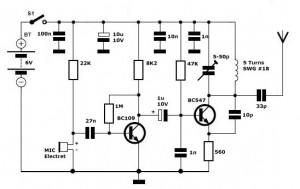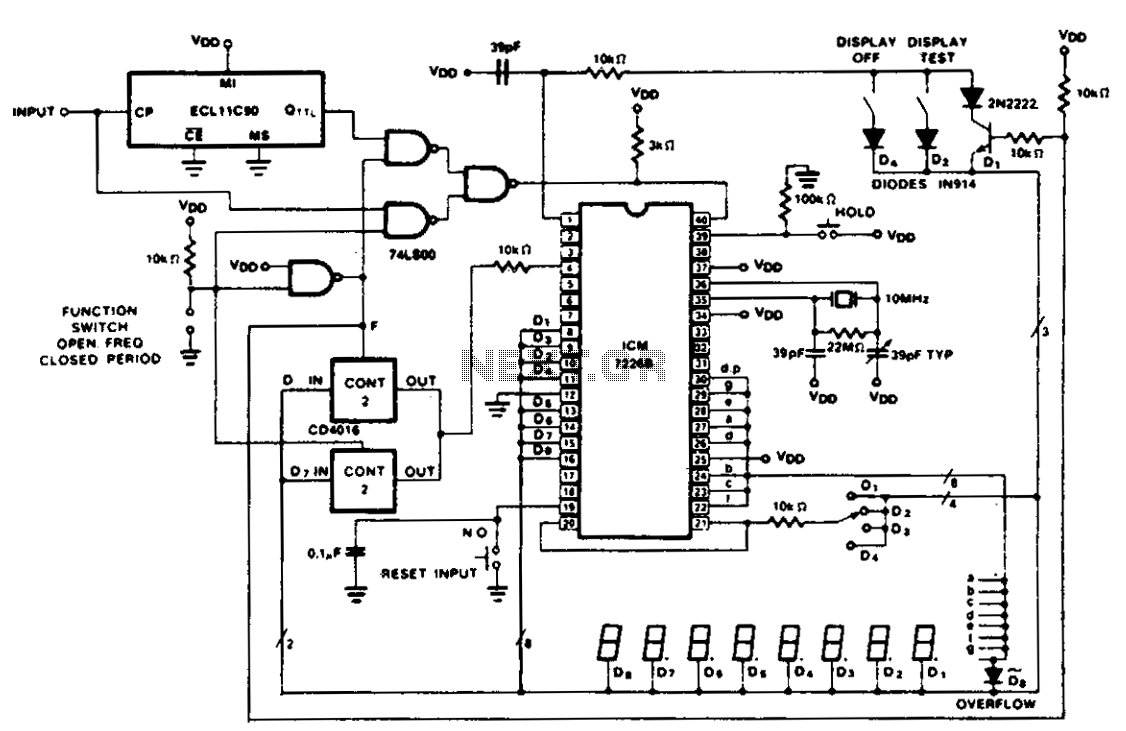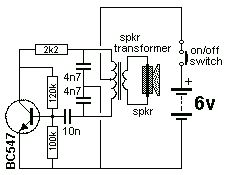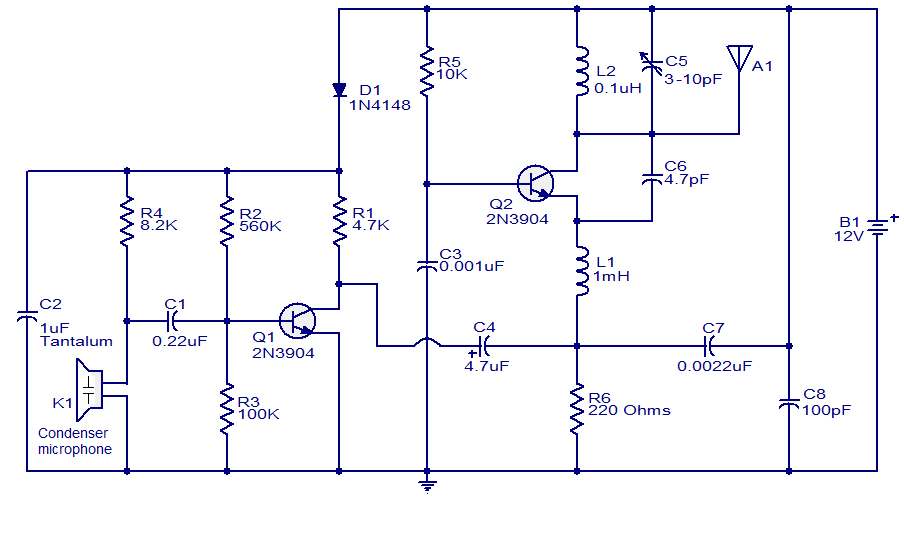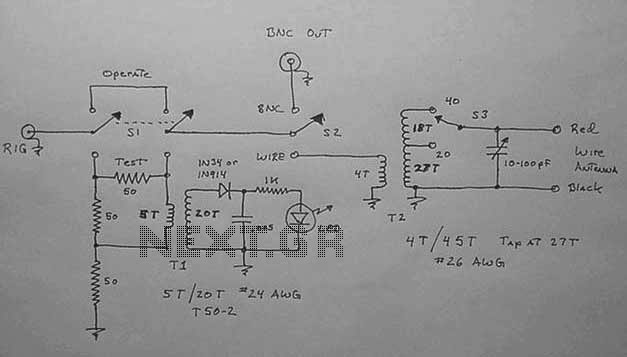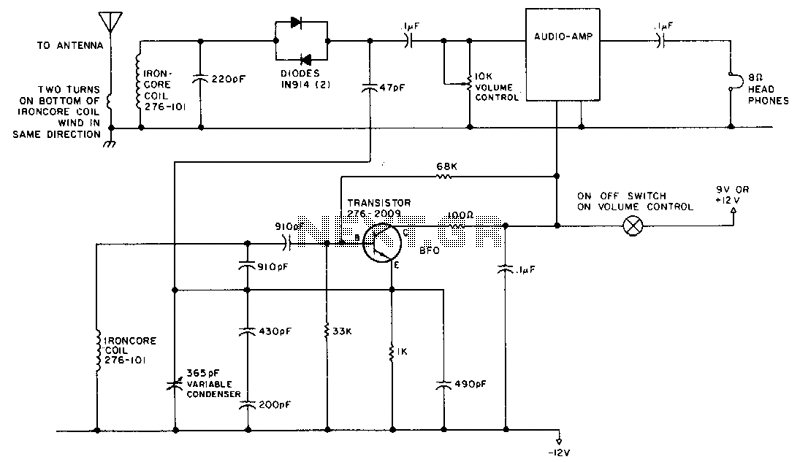
SIMPLE EVENT COUNTER
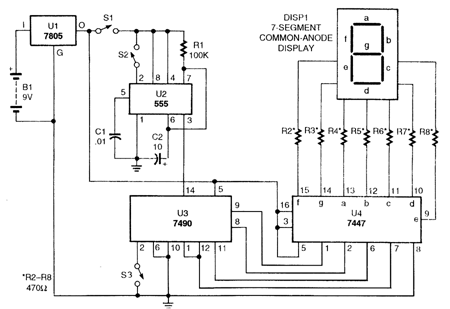
S1 is a power switch. U2 drives counter U3 by producing a pulse when S2 is depressed. U4 and DISP1 read the count of counter IC U3. S3 is a reset to zero switch. The counter is a basic one-digit circuit useful as a holding block or by itself.
The circuit described consists of several key components designed to function together in a basic counting application. S1 acts as the main power switch, controlling the overall power supply to the circuit. When S1 is in the ON position, the circuit is powered and ready for operation.
The component U2 is responsible for generating a pulse signal. This pulse is triggered when switch S2 is pressed. The pulse generated by U2 serves as an input signal to counter U3, which is a one-digit counter integrated circuit (IC). The primary function of U3 is to count the number of pulses it receives from U2. Each pulse corresponds to an increment in the count displayed by the circuit.
U4 and DISP1 are crucial components for monitoring the output of counter U3. U4 is likely an interface that interprets the digital count from U3, while DISP1 serves as the display unit that visually presents the count to the user. This setup allows for easy observation of the count value in real-time.
Additionally, S3 functions as a reset switch that allows the user to reset the count displayed on DISP1 back to zero. This feature is essential for applications where the count needs to be restarted or cleared for a new counting session.
Overall, this circuit serves as a simple yet effective one-digit counting mechanism, suitable for various applications where a basic count is required. Its design emphasizes ease of use with a straightforward reset function and a clear display of the current count.S1 is a power switch. U2 drives counter U3 by producing a pulse when S2 is depressed. U4 and DISP1 read the count of counter IC U3. S3 is a reset to zero switch. The counter is a basic one-digit circuit useful as a holding block or by itself. 🔗 External reference
The circuit described consists of several key components designed to function together in a basic counting application. S1 acts as the main power switch, controlling the overall power supply to the circuit. When S1 is in the ON position, the circuit is powered and ready for operation.
The component U2 is responsible for generating a pulse signal. This pulse is triggered when switch S2 is pressed. The pulse generated by U2 serves as an input signal to counter U3, which is a one-digit counter integrated circuit (IC). The primary function of U3 is to count the number of pulses it receives from U2. Each pulse corresponds to an increment in the count displayed by the circuit.
U4 and DISP1 are crucial components for monitoring the output of counter U3. U4 is likely an interface that interprets the digital count from U3, while DISP1 serves as the display unit that visually presents the count to the user. This setup allows for easy observation of the count value in real-time.
Additionally, S3 functions as a reset switch that allows the user to reset the count displayed on DISP1 back to zero. This feature is essential for applications where the count needs to be restarted or cleared for a new counting session.
Overall, this circuit serves as a simple yet effective one-digit counting mechanism, suitable for various applications where a basic count is required. Its design emphasizes ease of use with a straightforward reset function and a clear display of the current count.S1 is a power switch. U2 drives counter U3 by producing a pulse when S2 is depressed. U4 and DISP1 read the count of counter IC U3. S3 is a reset to zero switch. The counter is a basic one-digit circuit useful as a holding block or by itself. 🔗 External reference
Warning: include(partials/cookie-banner.php): Failed to open stream: Permission denied in /var/www/html/nextgr/view-circuit.php on line 713
Warning: include(): Failed opening 'partials/cookie-banner.php' for inclusion (include_path='.:/usr/share/php') in /var/www/html/nextgr/view-circuit.php on line 713
